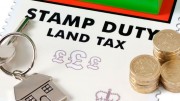UK landlords are seeing stronger net returns from their buy-to-let investments in 2025, even as upfront costs and headline incomes have shifted. New analysis by lettings expert Dwelly reveals that while the cost of entering the market has risen sharply, lower ongoing expenses-particularly falling mortgage interest-are helping landlords retain more of their income.
According to Dwelly’s year-on-year comparison, net returns for landlords have increased by 13.3%, from £14,206 in 2024 to £16,093 in 2025, offering renewed confidence for those investing in a still-vital sector of the UK housing market.
Higher start-up costs driven by stamp duty
Becoming a landlord in 2025 doesn’t come cheap. Dwelly found that the average start-up cost has increased to £16,824, up 63.3% from £10,302 last year. The primary driver? A steep rise in Stamp Duty Land Tax (SDLT), which now averages £14,926-a 76.9% increase year-on-year due to higher rates on additional properties.
Despite that, other acquisition-related costs have remained relatively stable. Fees for tenant-find services and compliance with digital tax rules haven’t changed significantly, indicating that it’s primarily the government’s tax policy that’s been squeezing entry costs for new landlords.
Sam Humphreys, Head of M&A at Dwelly, commented: “Today’s rental landscape is more complex, with higher up-front costs and slower capital growth. But our research shows landlords are adapting well, supported by falling mortgage costs and a strong underlying rental market.”
Mortgage savings boost profitability
The most dramatic improvement for landlords has come through their ongoing cost base. Annual running expenses for a typical buy-to-let have dropped 24.6%, from £15,694 in 2024 to £11,829 this year. Mortgage interest costs alone have fallen by 39.6%, from £10,210 to £6,162, thanks to a shift in rates-particularly for those with variable-rate mortgages.
This cost relief more than offsets the marginal increases in other areas. Maintenance and repairs have dipped slightly by 5.1%, while landlord insurance and void periods have seen small upticks. Still, the net effect is clear: less going out, more staying in the landlord’s pocket.
It’s a reality not often highlighted in public debate, where tax changes and regulation usually steal the spotlight. But these figures suggest landlords who stick with the sector-and manage their finances carefully-can still come out ahead.
Incomes ease slightly but yields remain resilient
Rental income itself has seen modest growth, increasing by 3.6% to reach £15,684 annually. However, total buy-to-let income-which includes both rent and capital growth-has dropped 6.6%, from £29,901 to £27,923. This is largely due to a 17% fall in capital appreciation, from £14,757 to £12,239.
Even so, once the lower running costs are factored in, the result is a stronger return for landlords. It’s a nuanced picture-capital growth may have slowed, but operating margins have improved. And in a challenging market, that kind of resilience speaks volumes.
Humphreys added: “What matters most is the return, and it’s going up. That’s a strong sign that, even in a tougher market, well-managed properties can still outperform.”
Despite political headwinds and policy reform, this latest research gives landlords a reason to stay confident. The increased costs of entry may give pause to some new investors-but for those already in the game or planning strategically, net profitability is actually on the rise.
In a sector often misunderstood or maligned, the figures speak for themselves. Smart management, declining mortgage rates, and a reliable rental base are combining to keep property investment a viable-and profitable-choice. The challenge now? Ensuring policy keeps pace with reality.







